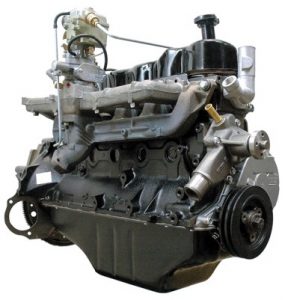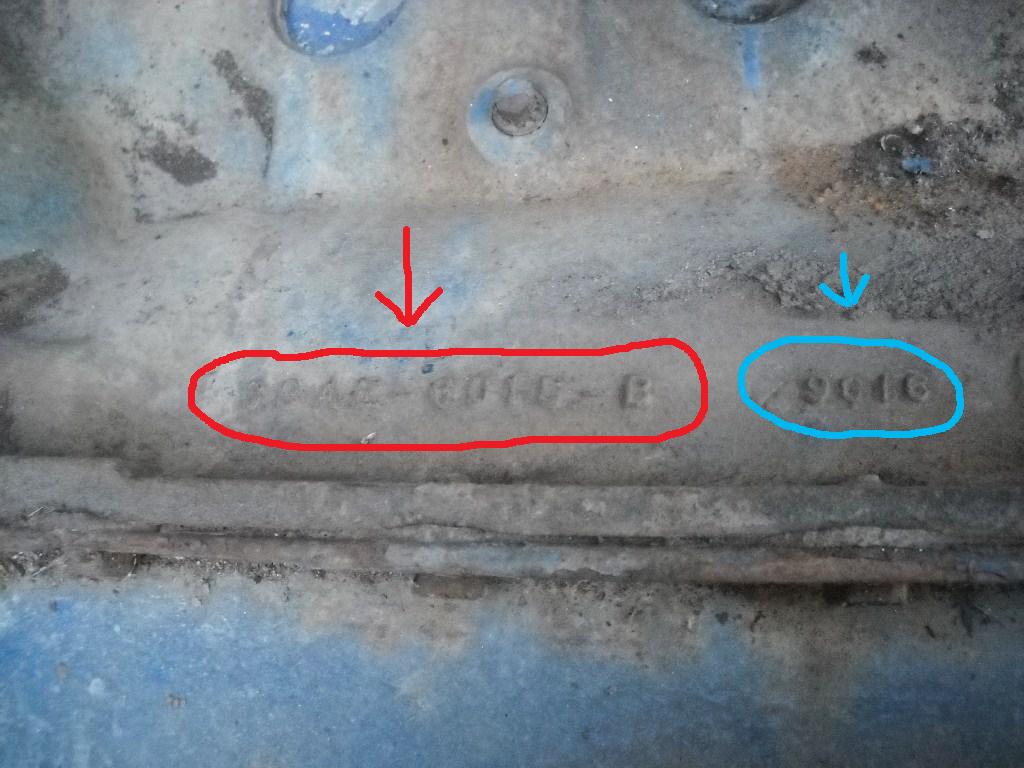Identify a Ford 300 Inline 6 by its distinct valve cover bolts and casting numbers on the engine block. Check for a long, straight-six cylinder layout under the hood.
The Ford 300 Inline 6 engine is a durable and reliable choice for many vehicle enthusiasts. Known for its robustness, it powered various Ford trucks and vans from the 1960s to the 1990s. This engine is easily recognizable by its unique features, including the valve cover bolts and casting numbers specific to its design.
Its straight-six configuration provides a balanced and smooth operation, contributing to its long-lasting performance. Whether restoring an old Ford or verifying an engine swap, identifying the Ford 300 Inline 6 ensures you’re working with a proven powerplant.
Introduction To The Ford 300 Inline 6
The Ford 300 Inline 6 engine first appeared in 1965. It became known for its durability and reliability. Many farmers and workers chose this engine for their trucks. Its simple design made it easy to repair. This engine powered many commercial vehicles. It has a long history of being used in heavy-duty applications.
The Ford 300 Inline 6 was used in many Ford trucks. It was popular in F-150 and F-250 models. This engine was also found in vans and buses. Its torque and power made it ideal for towing and hauling. Many enthusiasts and collectors still seek this engine today. Its robust nature ensures a long lifespan. This engine is a favorite in the vintage truck community.
Credit: www.ford-trucks.com
Visual Identification
The Ford 300 Inline 6 has a unique inline design. The cylinders are arranged in a straight line. This makes the engine look longer. Six spark plugs are visible on one side. The intake and exhaust manifolds are on the opposite side. The valve cover sits on top of the engine. It is often rectangular and flat.
The engine block is usually made of cast iron. This makes it heavy and durable. The engine serial number is stamped on the block. It is often found near the starter motor. The oil filter is located on the passenger side. The timing cover is at the front of the engine.
Decoding Engine Numbers
The engine number is on the driver’s side of the engine block. It is usually near the oil filter. You might need a flashlight to see it clearly. The numbers are stamped into the metal. They are not easy to rub off. Carefully clean the area to read the numbers. Dirt and grease can cover them.
The first digit shows the year of manufacture. The next two letters tell the engine model. The remaining numbers are the serial number. Each part gives specific information about the engine. Use a manual or guide to decode these numbers. They help you know if the engine is original.

Credit: www.foleyengines.com
Physical Characteristics
Block casting numbers are on the engine block. These numbers are usually located near the starter. The casting number starts with a letter followed by numbers. It helps to identify the engine. Ford 300 engines typically have “D” or “E” prefix. A number like “D7TE-6015-AA” is common.
Head casting marks are on the cylinder head. These marks are near the valve cover. Ford 300 heads have unique marks, like a raised “300” or “C” shape. Look for these marks to identify the engine. The marks are often clear and easy to see.
Performance Specifications
Identifying a Ford 300 Inline 6 involves checking the engine’s distinct valve cover bolts and the firing order stamped on the intake manifold. The engine block’s unique casting number provides another clear identifier.
Horsepower And Torque
The Ford 300 Inline 6 is known for its durability and strength. This engine produces around 101-150 horsepower. It also generates 223-265 lb-ft of torque. These numbers may vary based on the model year. This engine is powerful enough for many tasks. Its reliable performance is why it was used in many trucks.
Comparative Analysis With Other Engines
The Ford 300 Inline 6 stands out among other engines. It has more torque than many V6 engines. V8 engines may have more horsepower but often lack the same torque. The balance of horsepower and torque makes it versatile. It is often compared to the Chevy 292. Both engines are strong, but the Ford 300 is more popular. This is because of its reliability and ease of maintenance.
Common Modifications
Identifying a Ford 300 Inline 6 involves checking for unique features such as the distinct valve cover shape. Engine serial numbers and specific casting marks also help confirm its identity.
Aftermarket Upgrades
Many people choose aftermarket upgrades for their Ford 300 Inline 6. These upgrades help improve performance and increase horsepower. A popular choice is the high-flow air intake. It allows the engine to breathe better. Another option is the performance exhaust system. This reduces back pressure and improves engine efficiency.
Upgrading the ignition system can also be beneficial. A new distributor and spark plugs can make a big difference. Fuel injection kits are another favorite. They replace the old carburetors for better fuel delivery.
Performance Tuning
Performance tuning can make your Ford 300 Inline 6 run smoother. A common method is reprogramming the engine control unit (ECU). This helps optimize fuel and air mixture for better performance. Camshaft upgrades are also popular. They can enhance power and torque.
Another key component is the cooling system. An upgraded radiator and cooling fan can keep the engine temperature in check. Tuning the suspension can improve handling and ride quality. Many enthusiasts also go for performance brakes for better stopping power.
Maintenance Indicators
Spot the Ford 300 Inline 6 by checking for its distinctive valve cover and six evenly spaced intake ports. Verify the engine’s block casting number for confirmation.
Signs Of A Healthy Engine
A healthy Ford 300 Inline 6 engine runs smoothly. There are no strange noises. Oil levels should be checked regularly. Clean oil is a good sign. Coolant levels must be stable. Temperature gauges should stay in the normal range. No smoke from the exhaust means things are good. Fuel efficiency should be consistent. Regular maintenance keeps the engine happy.
Troubleshooting Common Issues
Overheating can happen if the coolant is low. Check for leaks in the coolant system. Engine knocking might mean low oil or poor fuel. Inspect the spark plugs if the engine misfires. Replace them if they are worn. Listen for odd noises while driving. Check the belts and hoses for wear. Look for oil leaks under the car. Fix them quickly to avoid damage. Regular checks can prevent most problems.
Preservation And Restoration
Regular maintenance is key for preserving a Ford 300 Inline 6. Change the oil every 3,000 miles to keep the engine healthy. Check for rust on the body and undercarriage. Use high-quality paint to prevent further rust. Lubricate moving parts to reduce wear and tear. Store the vehicle in a dry place to avoid moisture damage. Inspect the engine regularly for any signs of trouble. Clean the engine bay to remove dirt and grime. Replace worn-out parts promptly to avoid bigger issues.
Authentic parts ensure the best performance. Check online forums for recommendations. Visit local junkyards for rare finds. Contact vintage car clubs for leads on parts. Use reputable suppliers for purchasing. Verify part numbers before buying. Check the condition of used parts. Avoid counterfeit parts to maintain quality. Keep a list of trusted suppliers for future needs.

Credit: www.ford-trucks.com
Frequently Asked Questions
How Do I Identify My Ford Inline 6 Engine?
Locate the engine block casting number. It’s usually found near the starter motor or the distributor. Use this number to identify the engine model and year.
How Do I Identify My Ford Engine Block?
Locate the casting number on the engine block, typically found near the starter or valve cover. Decode it using a Ford engine block reference guide.
How Can You Tell The Difference Between A Ford 240 And 300?
Check the engine block casting numbers. Ford 240’s typically have C4TE numbers, while Ford 300’s usually have D7TE numbers.
What Years Did Ford Produce The 300 Inline 6?
Ford produced the 300 inline 6 from 1965 to 1996. This engine is known for its durability and reliability.
Conclusion
Identifying a Ford 300 Inline 6 is straightforward with the right knowledge. Pay attention to engine markings and features. A thorough inspection helps confirm the engine type. Remember these tips to ensure you correctly identify this classic engine. Understanding these details can enhance your automotive expertise.

